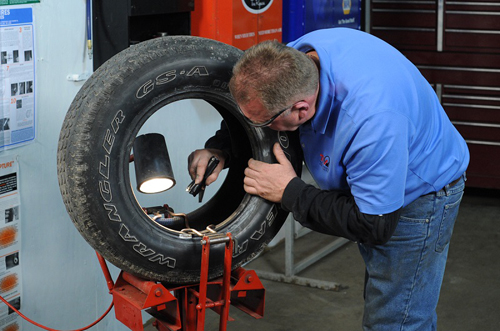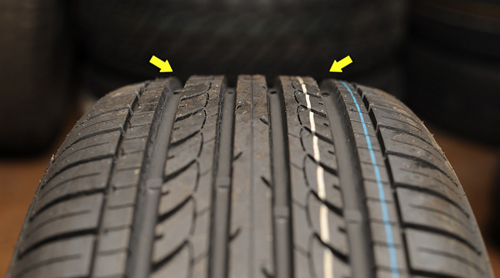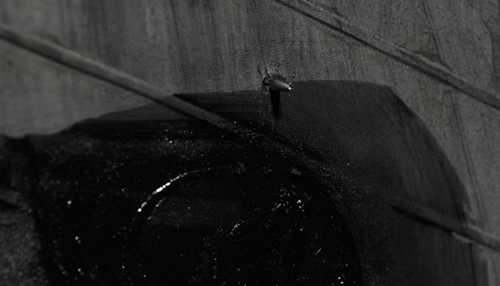Tire Repair
With every revolution, a tire runs the risk of being punctured by a foreign object and since the average tire will experience millions of revolutions throughout its lifespan, it is usually a matter of when you get a flat, not if. Knowing the difference between a proper tire repair and an improper tire repair could be critical to your safety.
When an object such as a nail breaks through the innerliner of a tire, the most immediate concern is the loss of inflation pressure. But the long-term risk is that the instability around the penetrating object can lead to a tread separation.
- A tire repair should be installed by a tire service technician who has been trained to do a complete, proper repair.
- It is important that the tire technician remove the tire from the rim so that the inside can be thoroughly inspected. Many times, a simple object such as a nail in the tread can result in severe damage to the sidewall that cannot be seen on the outside of the tire. Therefore, on-the-wheel wheel repairs like string plugs are not recommended and must be considered temporary.

- The only way to properly repair a tire is to demount it from the rim so it can inspected on the inside, remove the damaged material, fill the void with rubber, and seal the innerliner with a repair unit.
- A plug by itself or a patch by itself is not an acceptable repair because the plug does not permanently seal the innerliner and the patch does not fill the void left by the penetrating object, which allows water to enter the body of the tire and starting corroding the steel belts.
- The use of sealants or emergency inflators that contain a sealant are not recommended as long-term solutions to a flat tire for the same reasons.
- Puncture repairs are limited to the center of the tread area. If there are punctures or damage in the shoulder or sidewall of the tire, it is not repairable.

- If the injuries are close enough so that the repairs overlap or the injuries are directly across from each other, the tire cannot be repaired and must be scrapped.

- Never repair tires with a tread puncture larger that ¼-inch (6mm).
- Tires that are worn to the tire’s treadwear indicators or to 2/32-inch remaining tread depth in any area of the tread should not be repaired.
- Not all tires can be repaired. Specific repair limits should be based on recommendations or repair policy of the tire manufacturer and/or type of tire service.
When tires are repaired improperly, the results can be deadly. Be sure to ask your service technician if industry standard procedures are used in the repair process. When a puncture is within the limits established by the industry and properly repaired, you can expect the tire to continue to deliver thousands of miles of safe and reliable performance.